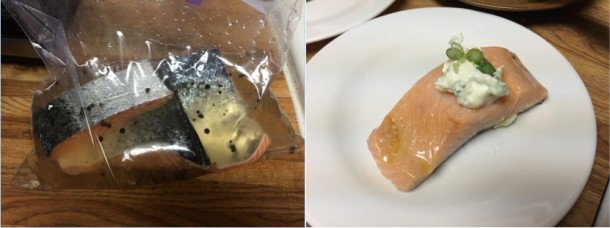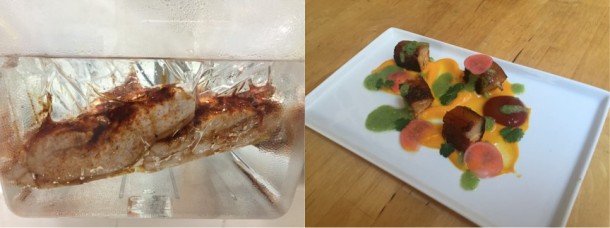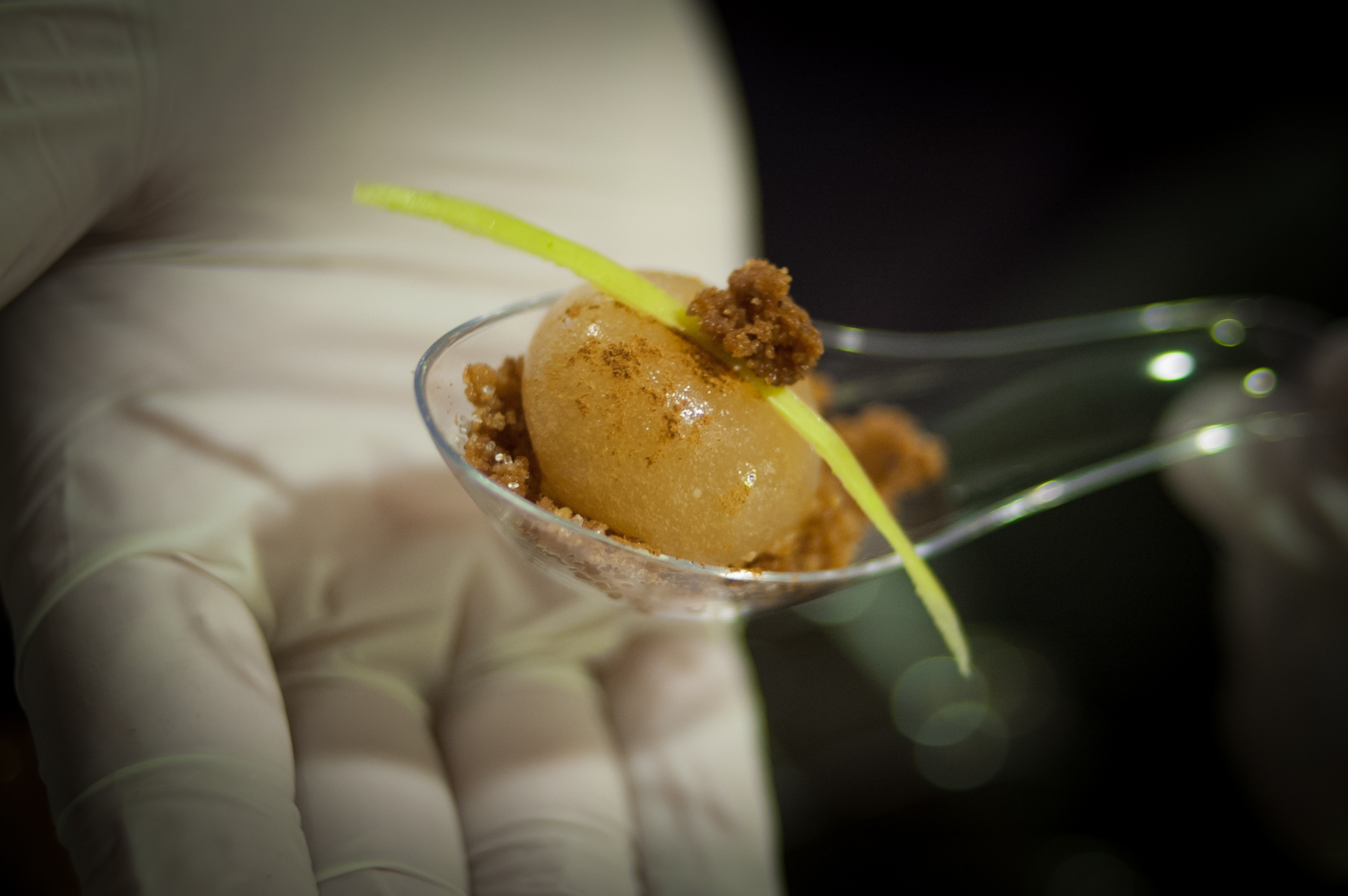The Science of Sous Vide
“Sous vide,” or “under vacuum,” refers to a style of cooking in which food is sealed in a plastic bag and submerged in a water bath that is held at a controlled temperature [1]. This technique originated in ancient times when humans wrapped their food in salt, fat, animal leaves, and animal bladders before cooking [2]. Sous vide in its fully realized form began in the 1960s as NASA scientists began to incorporate this concept into creating astronauts’ sealed-bag meals [2]. In the 1970s, French chefs (who had already popularized cooking en papillote or in paper), adopted the sous vide technique of cooking in plastic [3]. From here, sous vide spread to professional kitchens across the world, but it was not until the 1990s that food scientists began to study the deeper science behind sous vide processing. By the mid-2000s, sous vide became widely known and the past decade has seen a massive increase in its popularity [1] where it is heralded as “the most important technological advance in the kitchen since the microwave.” [3] Before sous vide machines were accessible to the home chef, a common method was using an ice chest, which keeps water hot long enough to effectively sous vide food [4]. Although this is still a popular and inexpensive technique, sous vide machines are now available from many brands for under $200.

Traditionally cooked steak (left) vs. sous vide steak (right). The gradation is
very visible in the traditionally cooked steak. [Photo credit: Modernist Cuisine]
![Figure 1: The weight loss (moisture loss) from New York strip steak at varying temperatures ranging from 120-160°F [6].](https://scienceandfooducla.files.wordpress.com/2016/01/sousvide2.jpg)
Figure 1: The weight loss (moisture loss) from New York strip steak at varying temperatures ranging from 120-160°F [6].
While this effective technique was formerly limited to professional kitchens, it is now accessible for the home cook! Companies such as Anova, Nomiku, and Sansaire have recently developed sous vide machines at an attractive price point. Fascinated by the attention around this rapidly popularized method, I purchased my own Anova and set out to test to see if these sous vide machines lived up to the stories.

At-home immersion circulators from different popular brands. [Photo credit: Modernist Cooking Made Easy]

Results from my sous-vided New York steak. [Photo credit: Ashton Yoon]

Salmon in brine (left) and finished sous vide salmon with lemon wasabi aioli, recipe from Sous Vide Supreme (right). [Photo credit: Ashton Yoon]

Pork belly immersed in the water bath (left). Honey sriracha pork belly with carrot purée, salsa verde, and pickled radishes. Recipe inspired from the 2014 movie “Chef” (right). [Photo credit: Ashton Yoon.]

New Zealand rack of lamb with herb crust during the cooking process (left). Final product, lamb recipe from Epicurious and Hasselback potato recipe from The Kitchn. [Photo credit: Ashton Yoon.]

Eggs during the sous vide process, no plastic sealing needed (left). Egg cooked at 155°F, recipe from Serious Eats (right). [Photo credit: Ashton Yoon.]
References cited
- Baldwin, Douglas. “Sous Vide Cooking: A Review.” International Journal of Gastronomy and Food Science 2012: 15-30. Print.
- Myhrvold, Nathan. “Why Cook Sous Vide?” Modernist Cuisine. Cima Creative, 2013. Web. 24 November 2015.
- Renton, Alex. “Sous Vide: The Chef’s Secret Coming to Your Kitchen.” The Guardian. Media Limited, 2014. Web. 25 November 2015.
- López-Alt, J. Kenji. “Cook Your Meat in a Beer Cooler: The World’s Best (and Cheapest) Sous Vide Hack.” Serious Eats. Serious Eats, 2010. Web. 2 January 2015.
- Suchy, Sara. “Testing Cooking Temperatures of Sous Vide.” Inside Science. American Institute of Physics, 2013. Web. 25 November 2015.
- López-Alt, J. Kenji. “How to Sous Vide Steak.” Serious Eats. Serious Eats, 2010. Web. 2 January 2015.
- Sasson, L. (2006). Functions of Fat Lecture, New York University.
- Buckley, C. (1987). “Storage stability of vitamin C in a simulated sous vide process.” Hotel and Catering Research Centre Laboratory Report 238: 2.
 About the author: Ashton Yoon received her B.S. in Environmental Science at UCLA and is currently pursuing a graduate degree in food science. Her favorite pastime is experimenting in the kitchen with new recipes and cooking techniques.
About the author: Ashton Yoon received her B.S. in Environmental Science at UCLA and is currently pursuing a graduate degree in food science. Her favorite pastime is experimenting in the kitchen with new recipes and cooking techniques.





